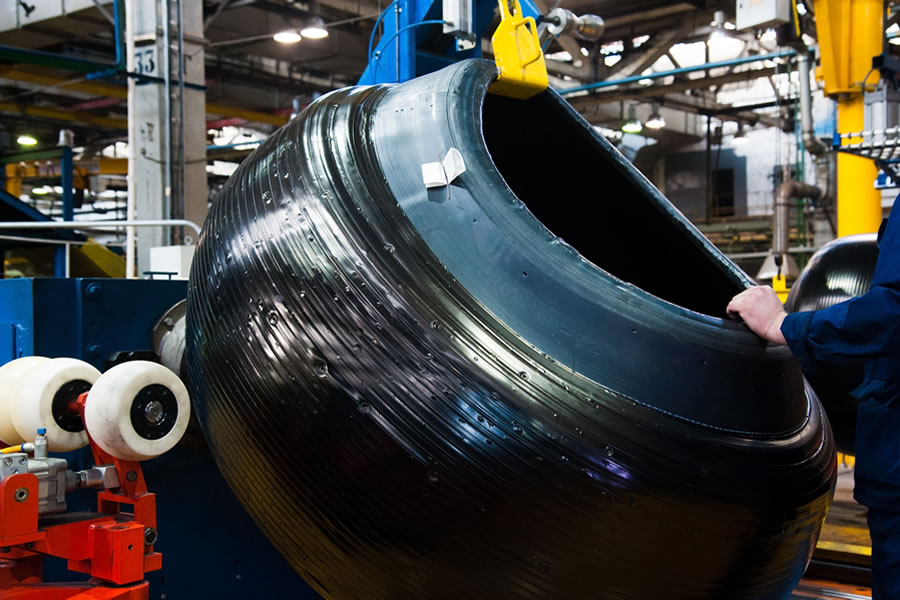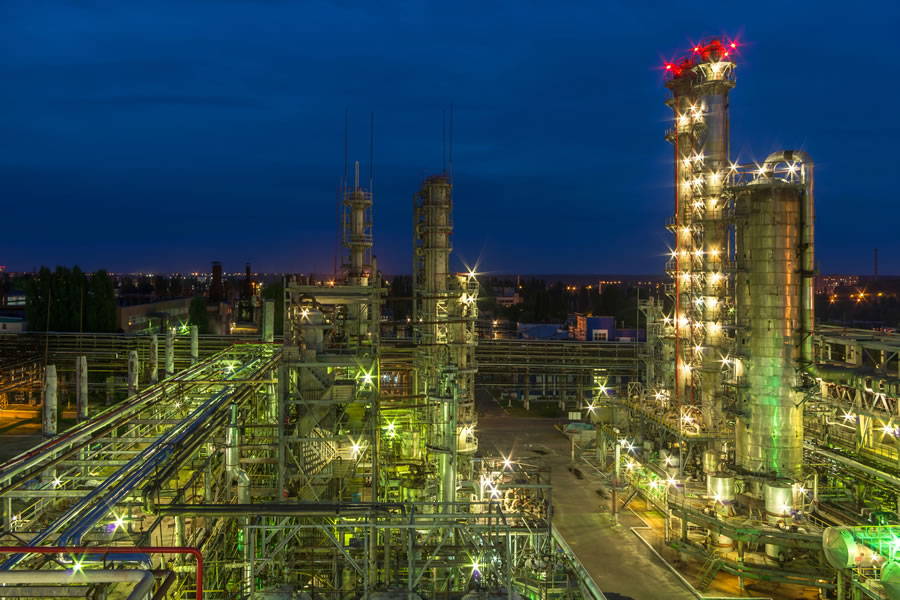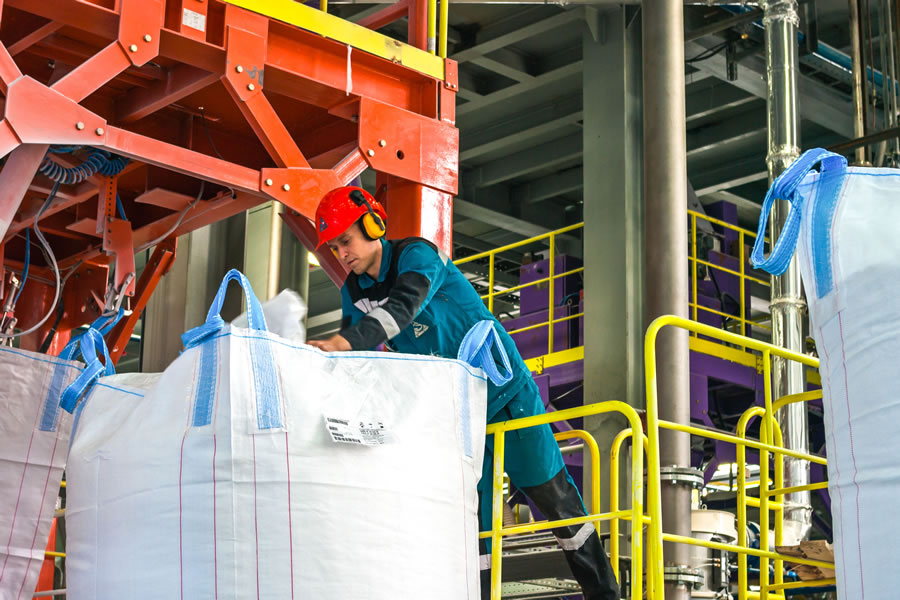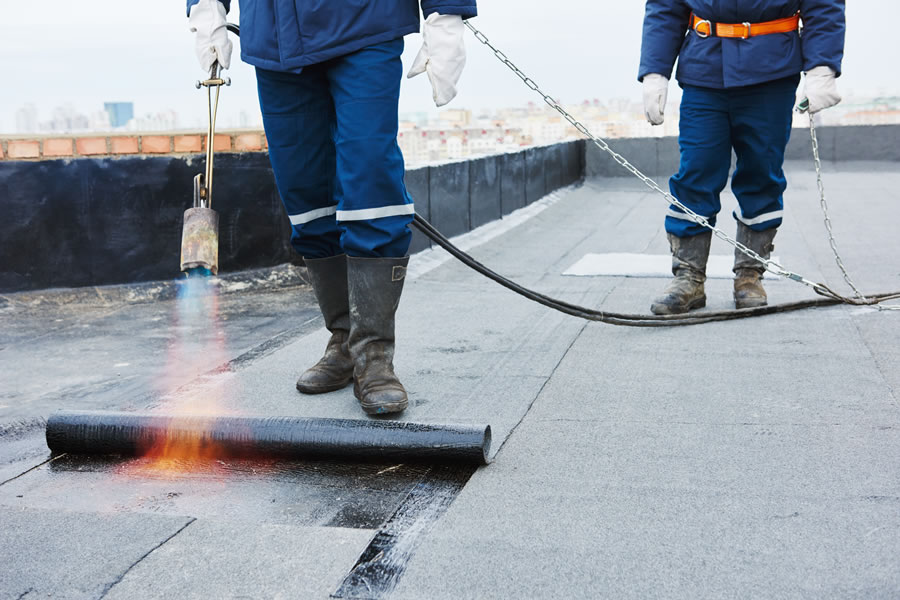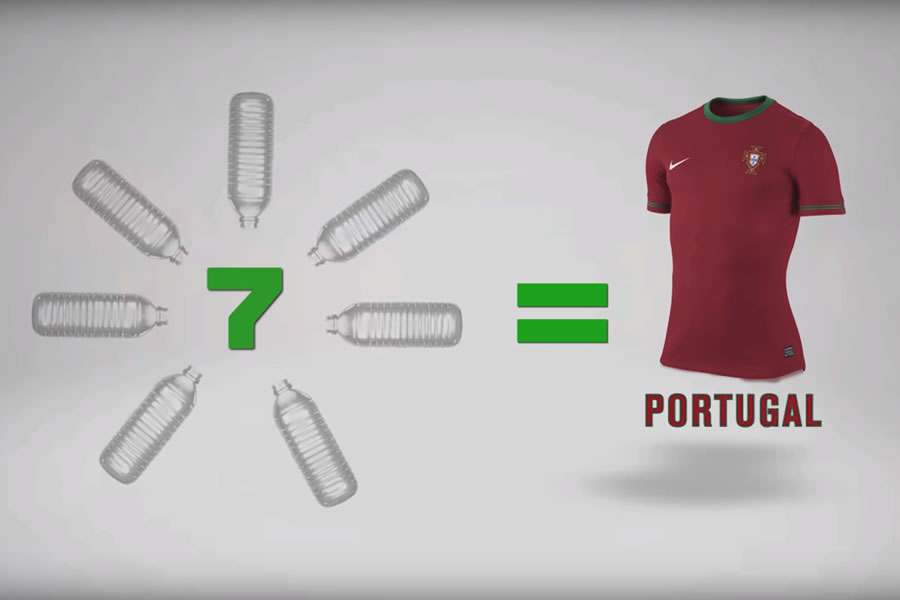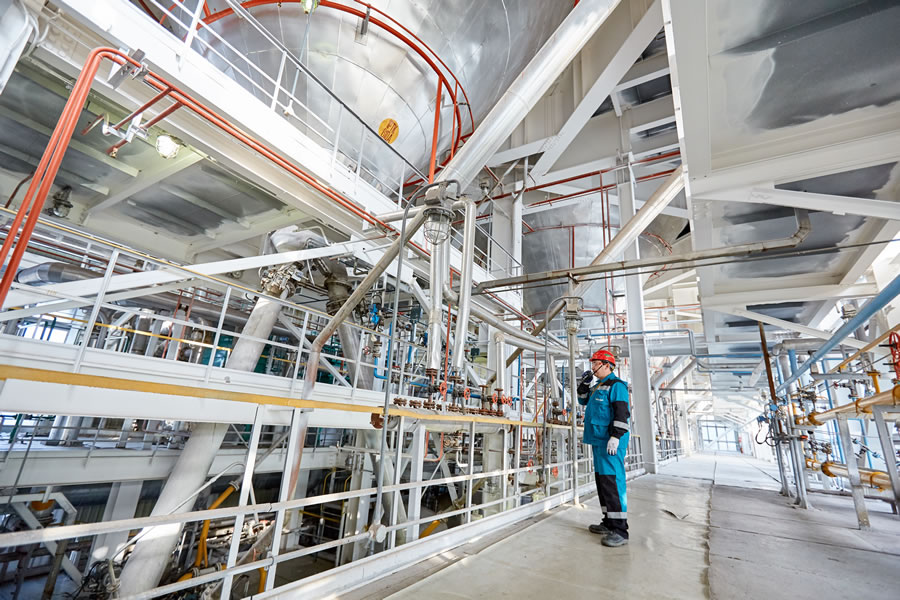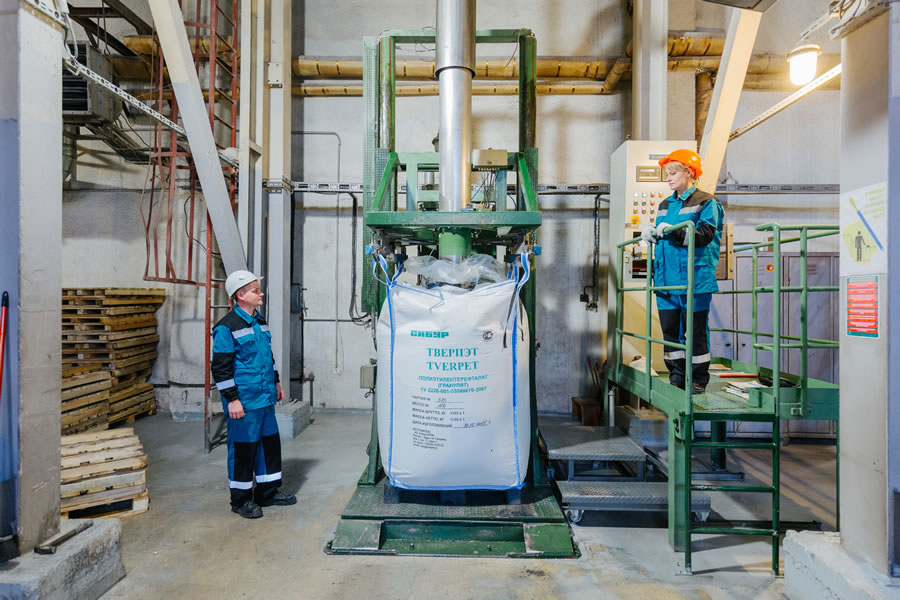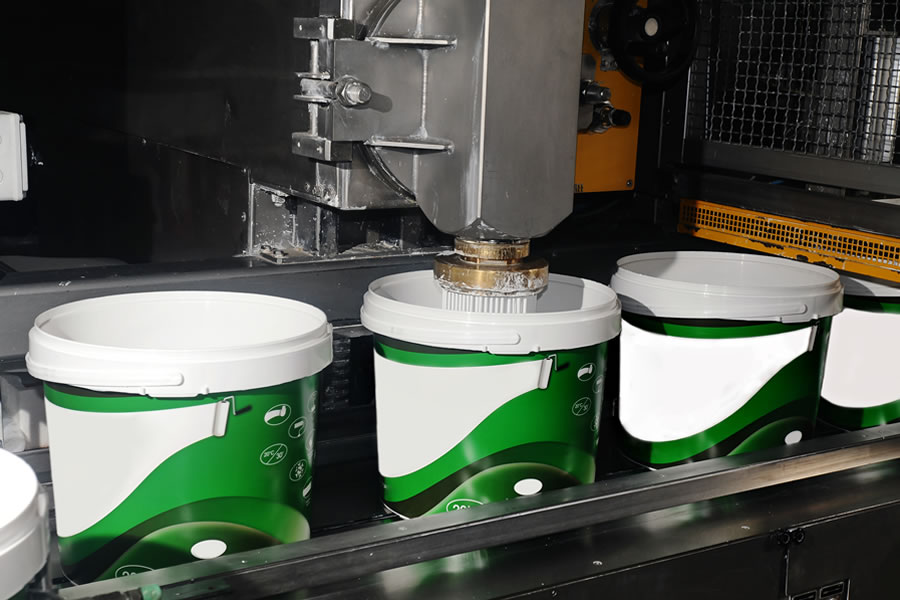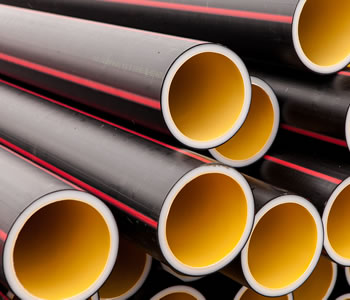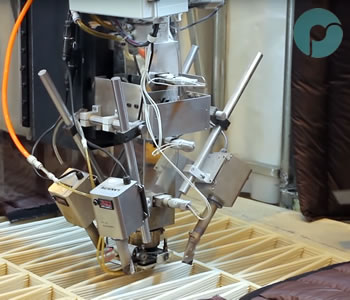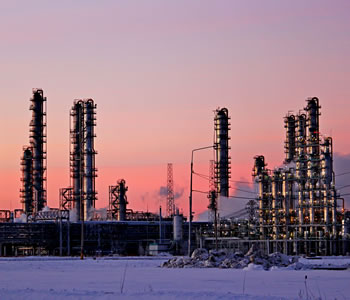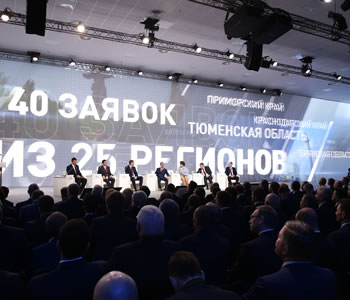Despite the challenging market environment and price volatility, SIBUR’s Plastics, Elastomers and Organic Synthesis Division has delivered solid performance. The impending launch of ZapSibNeftekhim is expected to produce an additional 100 ktpa of butadiene, a valuable feedstock in synthetic rubber manufacturing. The Company also plans to build new SBS polymer facilities and boost rubber production. A number of other projects, including in foreign markets, are currently are under consideration. Higher output of terephthalic acid at POLIEF will be used for the DOTP plasticiser production to be launched in Q2 2019. The additional volumes will be also sold in Russia and Belarus. In addition, we are starting a MAN project and planning to expand production of polystyrene.
Was 2018 a successful year for the Plastics, Elastomers and Organic Synthesis Division?
I believe the year was positive for the division. We have slightly exceeded our production targets and even more the financial ones. Production and sales of SBS polymers, TPE, and ethylene oxide have increased. Revenue rose by over 10% on the back of increased end product prices and high USD/RUB exchange rate. Overall, 2018 did not bring any surprises and we have delivered on our business plan.
Did you have to deal with anything unexpected during the year?
Yes. We certainly did not expect natural rubber prices to fall so dramatically. At the start of the year, we estimated rubber price to average USD 1,600 per tonne, however the actual price dropped to as low as USD 1,300 per tonne. The fact that prices for some synthetic rubber brands are linked to the natural rubber price has affected financial performance in certain product groups.
Rubber production has a great potential in the long term, and we are more than willing to invest in this segment.
Markets were also influenced by major shifts in the macro environment: a surge in oil prices followed by a decline in Q4 2018 and changes in the RUB exchange rate, which did not always repeat the pattern of oil prices. This resulted in strong volatility of feedstock and end product prices. Still, we managed to deliver rock solid performance.
In terms of the Division’s business results in 2018, our revenue and margins are in line with our expectations. Some product categories saw a decline, while other ones were on the rise. I am confident that thanks to our vertically integrated structure and broad offering of grades, both the Division and the Company as a whole can weather any swings and crises.
In 2018, the average rubber price fell below expectations to USD 1,300 per tonne.
Do you think the rubber segment is still attractive for the Company to invest in?
Of course. Once ZapSibNeftekhim is launched, the Company will be able to produce an additional 100 ktpa of butadiene, a valuable feedstock for synthetic rubbers. Monetising this additional volume is among the targets of our Division. This year, the Company has already initiated two investment projects, including the construction of a new 50 ktpa SBS facility and increase in the rubber BR-1243 Nd production by about 25%. A number of other projects is also under consideration.
In the long run, we definitely see a great potential in the rubber segment and will continue investing in it. In 1H 2019, a butyl rubber facility will be launched in India under SIBUR’s licence as part of a joint venture with Reliance. Production of halogenated butyl rubber is scheduled to kick off at the same site later in the year.
We are also exploring opportunities for investing in rubber projects in Saudi Arabia and China.
At what stage of development is the project in China?
Our joint venture with Sinopec has been active for several years, but up until recently we did not see any significant potential for launching production. In 2018, negotiations with our partners intensified, and the project seems to be finally getting off the ground.
The production of adhesives is still underdeveloped in Russia, with some 20 kt of adhesives imported annually. We are hoping to take most of this niche by replacing imports gradually.
What has changed in terms of the market potential? Is China buying more rubber now?
First of all, the demand for butadiene-nitrile rubber (BNR) has been rapidly growing. The global rubber consumption is increasing by about 3% annually, with BNR showing even higher growth rates, including in China.
Secondly, since our joint venture with Sinopec, we have upgraded rubber production at the Krasnoyarsk facility, launching a variety of new synthetic grades and positioning the Company for growth in Russia and expansion into China and Europe.
Currently, we supply rubber to China fr om our Krasnoyarsk facility. In the future, we are hoping to redirect these supplies to other geographies, opening up new markets for our joint venture.
In this context, do you have any development plans with respect to the Krasnoyarsk Synthetic Rubbers Plant (KSRP)?
In future, the Company will focus on manufacturing special rubber grades for the Russian and European markets. Today, synthetic brands are in high demand by the industrial rubber products industry.
What are your plans for other production sites – Voronezhsintezkauchuk and SIBUR Togliatti?
SIBUR Togliatti is specialising in commodity products. We do not see any expansion potential in this segment.
Voronezhsintezkauchuk manufactures special rubber brands and SBS polymers. We believe that these segments have significant growth potential and plan to develop them.
The purification shop for solvents and butadiene used in various rubber grades at SIBUR’s production site in Voronezh.
Are you considering the possibility of selling SIBUR Togliatti?
We estimate the SBS market in Europe will remain in short supply for the foreseeable future. Hence, it will be our main export market, especially since our products are well-known there.
We have no plans of selling SIBUR Togliatti. The facility delivers solid performance and contributes its fair share to the Company’s bottom line. However, if there is an interesting offer on the table, we will certainly consider it. That is the nature of business.
Speaking of potential investments abroad, you mentioned Saudi Arabia. Do you have any specific project in mind?
I am not ready to discuss details at this moment, as the future of that projects to a large extend depends on the potential construction of a petrochemical facility as part of the joint venture between Saudi Aramco and Total. The joint venture is designed to manufacture a number of by-products that could be used in the rubber production. However, this is not going to happen until 2023 or even later, therefore, I believe it is too early to announce any potential projects in Saudi Arabia. We have not made any decisions in that regard.
In 2018, SIBUR unveiled plans to expand the SBS production capacities in Voronezh by 50 ktpa. What is the rationale for this decision apart from feedstock availability?
The expansion is needed to manufacture new SBS brands for adhesives, compounds, and other product categories. Today, our grades are largely aimed at the traditional segments of roofing and PBB. In 2018, our SBS exports totalled some 30 kt, in addition to 50 kt supplied to domestic consumers.
The new grades will be sold in different proportions. The production of adhesive materials in Russia is currently underdeveloped, with about 20 kt imported annually. We are hoping to gradually fill in most of this niche.
Packaging of TPE in big bags at Voronezhsintezkauchuk.
Today, there are very few, if any, high-margin projects. When you study a project in detail, you understand that it will not be a source of super profits in the short term.
We estimate that SBS will remain in short supply in Europe for the foreseeable future. Hence, it will be our main export market, especially since our products are well-known there. We are also considering other markets, including Turkey and the United States. In other words, we will export to wherever there is a high-margin market.
In your previous interview with Rupec you mentioned that SBS consumption had been growing rapidly in the roofing segment. Did this trend continue in 2018?
The Russian market saw a 10% growth in SBS demand this year. The roofing and PBB segments grew at approximately the same rate.
I believe that growth will continue through 2019 and 2020. The ongoing infrastructure projects, implemented by the government, including through the private-public partnership arrangements, have been stimulating SBS consumption, particularly in the road industry.
At the same time, the growth in the roofing segment is likely to slow down.
Are you suggesting that the construction industry is facing problems?
The industry remains stagnant as evidenced by the consumption of products like polystyrene. There is no decline, but there is no growth, either. The construction industry relies heavily on financing from the housing renovation programmes and new housing projects. Provided there is adequate funding for the industry, we will hopefully see resumed demand for polystyrene and SBS in 2019.
SBS demand in roofing is likely to slow down due to stagnant growth in the construction industry.
Does SIBUR have any interest in the polystyrene packaging market?
Since all projects are forward-looking, you should be able to make projections. You need to estimate the size of the market and whether the company will be able to develop it.
Food packaging does not allow the use of polystyrene with fire retardants, which are essential to prevent material from burning, and packaging for household appliances has limitations on bromine-containing fire retardants. The polystyrene we produce does contains bromine-based fire retardants. We could certainly reconfigure our EPS production to exclude fire retardants, but that would significantly downsize our grade offering. The production capacity of our Perm facility is in excess of what the packaging market can accommodate. Neither can our product be used in the façade insulation segment. In other words, this is very risky. Therefore, we will continue manufacturing EPS with fire retardants for the construction industry.
How much of your EPS output is exported?
We have yet to export EPS beyond the former Soviet Union, with about 25% of the output sold primarily in Ukraine, Moldova, Belarus, and less so in Kazakhstan. We also have plans to tap into Europe.
How did this segment perform in 2018?
We sold 104 kt of polystyrene, which is equal to the facility’s current capacity. We have launched a new grade and are hoping to increase production in 2019 by a single-digit percentage point, but it remains to be seen if we can do that.
Banning plastic packaging has been a major global story lately. What do you think about this initiative?
The problem of plastic packaging does need to be addressed. However, banning it is the easiest, but hardly the most effective solution. What we should do is enhance our recycling industry. This is certainly a more challenging, but not an impossible task.
PET bottles are much more eco-friendly than any other packaging throughout their lifecycle. They require less mineral resource to produce and process, have lower carbon footprint, and are fully recyclable.
We need to cultivate environmental awareness in our people, implement separate waste collection, and stimulate waste recycling. All plastic waste can be recycled.
Nike makes football uniforms from PET packaging.
Is polystyrene packaging also recyclable?
PET bottles are much more eco-friendly than any other packaging throughout their lifecycle. They require less mineral resource to produce and process, have lower carbon footprint and are fully recyclable.
Expandable polystyrene can be easily recycled into general-purpose polystyrene, and such facilities are available in Russia.
Would you say that announcements by major companies on switching to exclusively recyclable packaging are nothing but populism?
The statements on transitioning to bio-packaging based on crops are clearly populist. In my view, it makes no sense to waste our most valuable resources, water and land, on “growing plastics”.
Still, there is significant consumer interest in eco-friendly packaging, and recyclable plastic is exactly of this kind.
In 2017, SIBUR announced plans for expanding the terephthalic acid capacity at POLIEF to 350 ktpa. The increased output is more than the Company’s two PET facilities can accommodate. What are you planning to do with the “excess” volumes?
True, there will be 100 kt more TPA than our two PET facilities can handle. We will partially use it at our DOTP plasticiser facility slated for launch in Q2 2019 with an annual capacity of 100 kt. It will take about 40 kt of terephthalic acid.
The remaining 60 kt of TPA will be sold to consumers in Russia or exported to Belarus, for example. There is a market niche available for that volume. In addition, we are working on a number of smaller TPA related projects.
Terephthalic acid production at POLIEF.
Do you have any plans for modernising SIBUR’s PET production facility? Are you possibly considering fibre PET capacities?
We have reached the design capacity in butyl acrylates. There was a need for another producer to enter the market, and we are happy that Gazprom Neftekhim Salavat launched production.
We have already implemented fibre PET production at our site in Tver, which also manufactures high viscosity and film PET. Our fibre PET grade has been homologated at the Grodno Chemical Fibre Plant (Grodno Khimvolokno).
We plan to manufacture polyethylene terephthalate (PET) for beer kegs. Essentially, SIBUR-PETF is gradually evolving into a boutique production facility, focusing on small batches of specialty grades.
A few years ago, PET projects with a capacity of over 1 mtpa were very popular in the industry. Today, however, there seems to be no interest in such projects. Why is this so?
I do not believe that facilities with a capacity of over 1 mtpa have a significant potential in Russia. These facilities need plenty of feedstock, and it is an issue. Still, such projects do exist, and each is evolving at its own pace.
I can see why there is a real interest in PET projects. The market has been demonstrating stable growth, while remaining undersupplied. Imports primarily come from Asia. However, the growth rates have been declining over the recent years, with the consumption rate expanding by only 2% y-o-y in 2018 compared to 4% in 2017. We should also take into account that the circular economy trends will influence the primary PET production, involving more recycled products. Most importantly, the share of PET packaging will keep growing.
SIBUR-PETF production site.
How is the acrylate business coming along? What has changed for SIBUR and the market as a whole with the launch of the production facility in Salavat?
I can see why there is a real interest in PET projects. The PET market has been demonstrating a stable growth, while remaining undersupplied.
As you know, SIBUR purchased the acrylates facility seven years ago. Since then, we have boosted production from 20 ktpa of butyl acrylate to over 50 ktpa of all ester types. In the course of these years, we contributed significantly to the development of the Russian market. We helped the adhesive tape manufacturers to localise production in Russia by guaranteeing them long-term contracts to supply acrylates and BOPP films from Biaksplen. We facilitated the growth of the paints and varnishes segment.
As a result, the acrylates consumption in Russia has grown manyfold. Today, butyl acrylate alone totals over 40 ktpa in domestic sales. We have reached the design capacity in butyl acrylate. There was a need for another producer to enter the market, and we are happy that Gazprom Neftekhim Salavat launched production.
In addition to butyl acrylate, we will continue manufacturing 2-ethylhexyl acrylate using a technology developed by our corporate R&D NIOST. In 2018, we produced about 10 kt of 2-ethylhexyl acrylate, selling around 1 kt in Russia. I believe that domestic consumption will see a steady growth through import substitution, for example, in the road marking segment.
In June last year, SIBUR and Gazprom Neftekhim Salavat petitioned the Federal Antimonopoly Service (FAS) to be allowed to jointly develop the butyl acrylate market. Could you explain what that means?
We did petition FAS and the permission was granted. This is quite unusual for producers and consumers to approach the watchdog at their own initiative, requesting to jointly develop the market. SIBUR and Gazprom are currently going through internal coordination of their joint project – JV Salavat Petrochemical Complex, and hopefully, it will be fully operational in 2019.
The joint venture will enable the companies to develop the market using our time-tested strategies and pursue exports to Europe and Turkey under long-term contracts.
In late 2018, SIBUR announced the start of the project to build a maleic anhydride (MAN) production facility, which had been originally unveiled in 2016. Why did it take so long to go through with the investment?
Today there are very few, if any, high-margin projects. When you study the project in detail, you understand that it will not be a source of super profits in the short term. Since all projects are focused on the future, you should be able to make projections. You need to estimate the market size, and whether the company will be able to develop it.
Today, Russia imports about 5 ktpa of MAN. While end products account for all of the imports, at the beginning, out of the 45 ktpa that we are planning to produce, we can only count on the sales of 5 ktpa. Therefore, as we build our MAN facility we should help potential consumers with their MAN processing projects at the same time. Currently, we are analysing the market and our potential customers.
MAN is used as a feedstock for paints and varnishes, synthetic rubber, and in many other areas.
With the development of processing and launch of ZapSibNeftekhim, when two thirds of the hydrocarbon feedstock will be processed into higher value-added products, SIBUR will be evolving from a petrochemical into a chemical company.
It took a lot of time to optimise capital expenditures for the project. We held talks with potential equipment suppliers, looking for the best options in terms costs and quality. In late 2018, the project was reviewed at the investment committee, and today we are planning to launch the facility in 2021. What other projects in the special chemicals segment are of interest to SIBUR?
Potentially, we are interested in almost any feedstock that is imported to Russia and is either not produced here like maleic anhydride or isocyanates, or is produced in insufficient amounts, like propylene oxide, and is part of an end product.
Do you see a strong business case in RusPAV?
RusPAV will not definitely be implemented as originally conceived many years ago. We are looking into ethylene oxide as an element in the chemical methods to increase oil production. This is a very challenging task that we are working on together with some oil companies. If we succeed in developing an appropriate formula, this project could then get off the ground.
Could you provide more details about the DOTP plasticiser production, which also belongs to special chemicals?
In Perm, we are building Europe’s largest DOTP facility with an annual capacity of 1,000 kt to be launched in 2019. Initially, the bulk of the output will be exported, as it will take some time to obtain homologation in Russia, meaning that we will not be able to immediately replace phthalate DOP or DINP plasticisers with DOTP. For the time being, we will focus on the European market, wh ere our product is well-known and in demand.
What gives you a competitive edge: is it price or quality?
It is easier to produce high-quality DOTP than high-quality rubber, but we are good at both. I am more than confident in the high quality of our product. We will sell at market prices. Our edge is in proximity to customers. The plasticiser will be delivered to our European warehouses, which will simplify the logistics.
Looking beyond 2020, a major portion of DOTP will be sold in Russia. I have no doubt that most consumers will prefer a phthalate-free plasticiser in products like linoleum, wallpaper, and cables. DTOP is an eco-friendly product with great prospects.
SIBUR’s Plastics, Elastomers and Organic Synthesis Division brings together completely different product chains. What place will it have in the Company’s organisational structure within, say, 10 years from now?
I think it will play a major part. With the development of processing and launch of ZapSibNeftekhim, when two thirds of the hydrocarbon feedstock is processed into higher value-added products, SIBUR will be evolving from a petrochemical into a chemical company.
It will probably combine a strong polyolefins business based on 1+ mtpa facilities, and a solid special chemicals business. That is how I see it.
Source: rupec.ru
Download PDF

